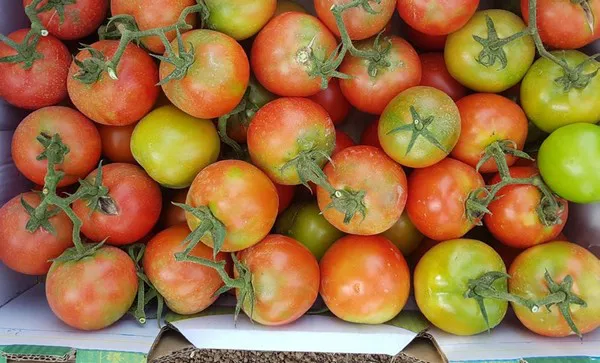ToBRFV has been making the rounds in Europe, so it's no surprise that the French Agency for Food, Environmental and Occupational Health & Safety (ANSES) has also taken note. Last year, they commissioned an expert assessment, which has resulted in a comprehensive report on the risks of the virus to French cultivation, and recommendations to limit the impact an outbreak might have on the country.

Risk assessment
Taking into account the importance of the glasshouse tomato production chain in France, the highly infectious nature of the virus and the susceptibility of tomatoes, and the extent of the potential economic impacts on the French metropolitan territory, the report proposes options for management measures.
The area of potential establishment where an impact is expected, includes commercial production areas and home gardens where host plants are grown. The report's authors note that the endangered area can likely be restricted to areas of large-scale production or marketing of tomatoes (both indoors and in the open field) as well as areas of chili pepper production. These are mainly the regions of Grand-Ouest (Brittany, Pays de la Loire), Provence-Alpes-Côte d'Azur and Nouvelle-Aquitaine.

Breakdown of French tomato production in 2017. Source: Agreste (2018)
Monitoring
ANSES recommends the implementation of a monitoring plan in order to decide on the occurrence of ToBRFV in France and insists on the crucial importance of rapidly reporting its presence in the production areas. "Good information for professionals is essential to make them aware of the stakes involved in a rapid detection/response cycle", says Dr Roger Genet, Director General of ANSES.
Good Seed and Plant Practices
The Agency also recommends that compliance with the GSPP (Good Seed and Plant Practices) specifications should be adhered to in both seed and seedlings, despite the fact that they do not cover ToBRFV. "These specifications can be adapted to ToBRFV in a meaningful way", the report's authors note. "This standard, originally developed to combat the introduction and spread of Clavibacter michiganensis subsp michiganensis (Cmm) by the professionals themselves, aims at the control of water, personnel, equipment and plant propagation material; this management is based on risk analysis, regular monitoring of the material and taking the risk into account on a daily basis with the implementation of management protocols, traceability, etc. Companies applying this standard are independently audited and labelled. Among other things, at the place of seed production, periodic analyses should be carried out on parents and F1 hybrids ready for sale."
Resistant varieties
Another measure that could help stem the spread of the virus, is the development of resistant varieties. According to one of the report's contributors, Eric Verdin of INRA, breeding programs have been initiated by seed companies such as Syngenta and Limagrain to create tomato varieties that are resistant or tolerant to ToBRFV.
Import restrictions
The Agency further recommends a specific requirement for imports of tomato fruits and chili pepper: imports of tomato fruits and chili pepper must originate from a production site not contaminated with ToBRFV, ANSES advises.
Informing smaller growers
The Agency also notes that the risk of virus transfer from imported fruit to crops is more likely in family production than in the professional world, due to the proximity between culinary and production activities and the movement of handlers on the production site compared to professional farms with more structured activities. In addition, there is the risk of entry via the market of seeds purchased by private individuals on the Internet. The ANSES therefore recommends informing private individuals about this new risk.
"Only rapid and determined action involving communication efforts with professionals and amateurs will make it possible to achieve the eradication objective", according to ANSES. "The Agency stresses the crucial importance of rapid notification of the presence of the virus in production areas. Indeed, the Agency has doubts about the success of a containment strategy aimed solely at limiting the spread of the virus by applying hygiene measures and restricting the movement of contaminated plant material."
Further research needed
As this is a new and emerging pest, the Agency also points to a need for research to overcome some uncertainties: evaluation of the rate of seed transmission, effectiveness of seed treatments and characterisation of the host range (in particular the role of relay plants) and to provide sustainable control strategies such as the breeding of resistant varieties for example.
The full report (in French) can be downloaded from the ANSES website.
